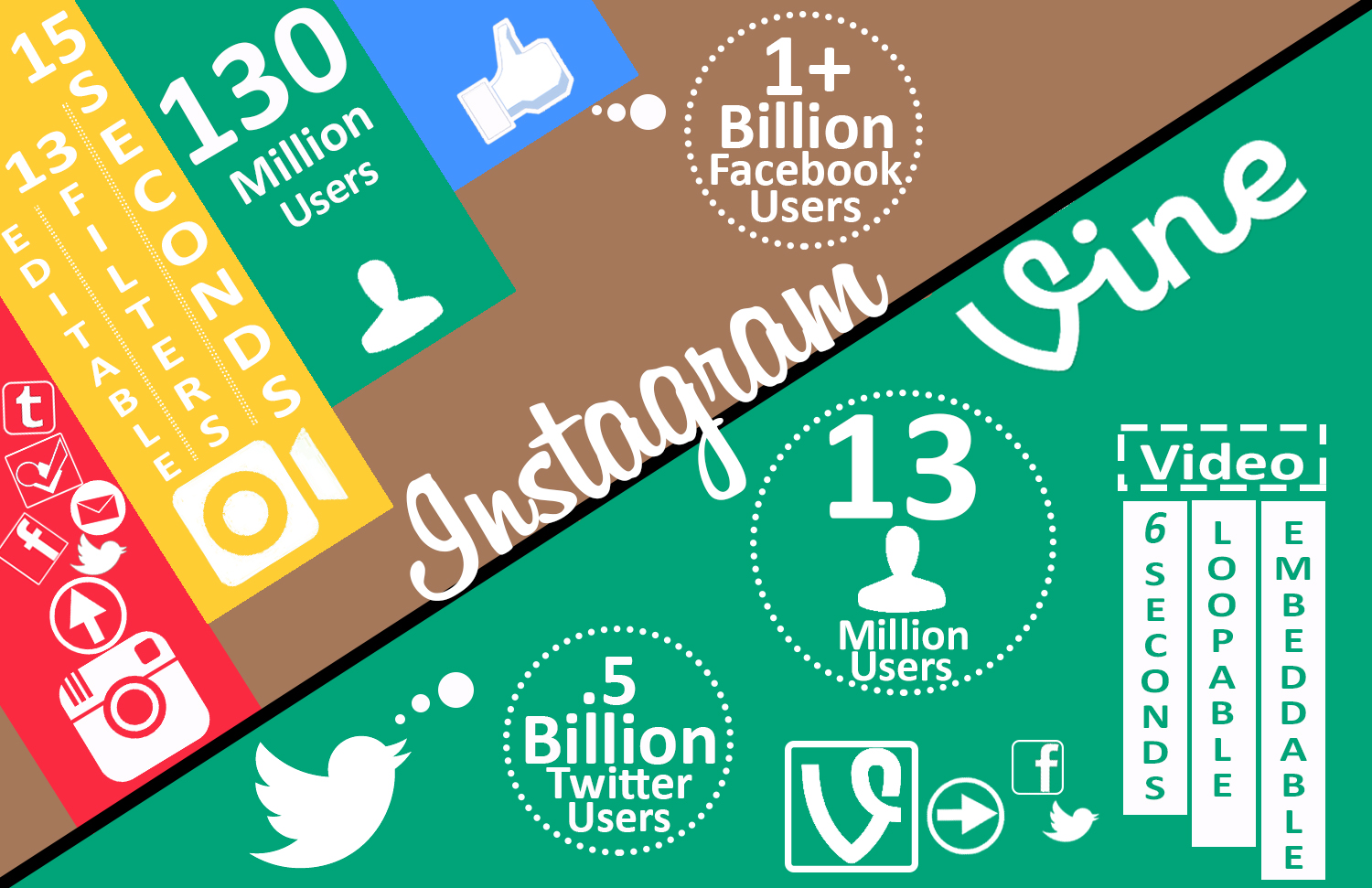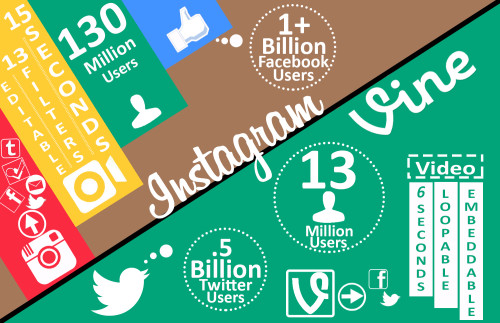6 seconds. 15 seconds. Filters. No filters. With Instagram and Vine both offering a wide array of features and limitations, it can be hard to decide which short form video application might be worth devoting time to. The fact of the matter is that each platform has pros and cons that should be carefully weighed before determining which application is right for your marketing needs.
Let’s take a close look at each.
Vine
Once Vine was purchased by Twitter, it opened a new type of dynamic media sharing on the network. You could shoot and share videos with little to no experience. The application uses a touch interface that allows users to capture video in short clips, quickly and easily. The sum of these clips is no longer than six seconds and can be instantly shared on Twitter.
Pros
Though it doesn’t necessarily compare to YouTube, Vine does have its advantages. Its short video length is optimal for the fast pace of the Twitter feed. Six seconds automatically set to loop gives the user multiple chances to see the entire video while scrolling through other content. Users may miss the main concept of a longer video as they move on to other newer content within the stream. It’s also relatively easy to understand. Simply point, press, and shoot your video, write a quick description and post it to Vine’s network as well as Twitter and several others if you wish.
Cons
After being purchased by Twitter, the native Facebook sharing functionality was disabled. This means that if you wish to share Vine videos on Facebook, you must copy and paste a link. It also means that Facebook will not display your videos as dynamic content, making it much less shareable and less appealing to users. This can weigh heavily into your decision of whether or not to use Vine as the platform for your short form video marketing needs.
Clunky Facebook sharing isn’t the only drawback to using Vine, though. The app also doesn’t allow you to import pre-recorded content into its database. This means that once you shoot a video, you must share it immediately afterward. It essentially prevents you from being able to edit or review the video before it’s posted. Many marketing managers are not comfortable with the lack of editing before publishing and this may drive them away from Vine.
Instagram Video
Instagram began as a photo sharing application that became popular due to its unique filter functionality. After being purchased by Facebook, Instagram has seen a steady stream of updates improving the applications functionality and broadening appeal. Most recently Instagram launched video capability. It was immediately compared to Twitter owned Vine. It turns out there was good reason for comparison. The application functions in many ways that are very similar to Vine. Some might even say it is superior to Vine’s functionality.
Pros
Instagram offers many great features. In addition to the ability to add filters to your videos, it also has fairly high-end stabilization software that can help make videos less shaky and more impressive. It also offers the ability to import videos from your outside sources. This means a video can be edited and approved by a third party if necessary before publishing. The format is slightly longer allowing for a more developed story.
Likely due to the increased length, Instagram videos do no loop and require the user to hover or click on them to play. This is much less disruptive when scanning the feed. You only interact with videos that interest you and it does not cause bandwidth issues on mobile devices.
Cons
While Instagram is a great tool, it’s not without its flaws. Fifteen seconds often feels too long or too short. Videos sometimes feel cramped in the short period of time while others leave dead air. While this can now be corrected with simple editing before publishing, many small brands and marketers may need to experiment before publishing to their branded channels. Instagram video also has a much higher learning curve. More features can often mean more opportunities for mistakes. Import or upload errors could easily occur. Confusion between multiple versions of the same video could also cause confusion.
So, what short form video application is right for you? Well, I can’t tell you definitively, but my suggestion is to experiment with both. You may find that you use both applications, but for different purposes and on different channels. The best part is as long as you’re creating interesting and dynamic content, you really can’t go wrong.
Which application do you prefer? What are your tips and tricks?
–
Aidan Hijleh is a freelance copywriter and serves as the Non-Profit Partnership Liaison for Benchmark Email Marketing Services. Aidan advocates free email marketing services to assist with the flourishing of grassroots organizations.



Jack
7 Sep 2013Interesting article, If I had to pick between Instagram and Vine, probably I would pick Vine because in my opinion its more popular then Instagram video, by the way all my friends use Vine… 😀